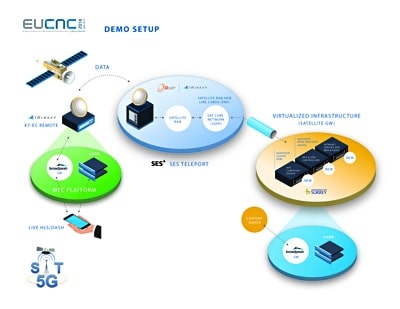From SatMagazine
While terrestrial and mobile service operators have always been on the cutting edge of next-generation networks, satellite networks have traditionally had to play catch up, spending extra time on the backend to find ways to seamlessly integrate into the prevalent standards and technologies.
 Now, the mobile and terrestrial industry is beginning to adopt the new 5G standard for higher data rates, higher efficiencies, massive scalability and lower costs. 5G, too, is expected to dramatically change how satellite is integrated into the larger mobile networks. This time, however, the satellite industry is making it a priority to participate in the development of 5G from the get-go.
Now, the mobile and terrestrial industry is beginning to adopt the new 5G standard for higher data rates, higher efficiencies, massive scalability and lower costs. 5G, too, is expected to dramatically change how satellite is integrated into the larger mobile networks. This time, however, the satellite industry is making it a priority to participate in the development of 5G from the get-go.
Even though the full 5G future is still a few years away, it’s easy to understand the excitement that’s already building in the satellite industry. The new standard will transform how the whole industry operates and how users experience the new connectivity services.
The 5G buzz is prompting questions such as: What will it take to integrate satellite into this standard? And how can satellite leapfrog the developments and adopt the advances from the terrestrial and mobile industry into satellite networks today?
A Unified Industry
The satellite industry can find some answers to these questions by paying close attention to the key technological pillars on which the telecom industry is building the 5G revolution. These include network programmability, function virtualization and service orchestration. Continue>